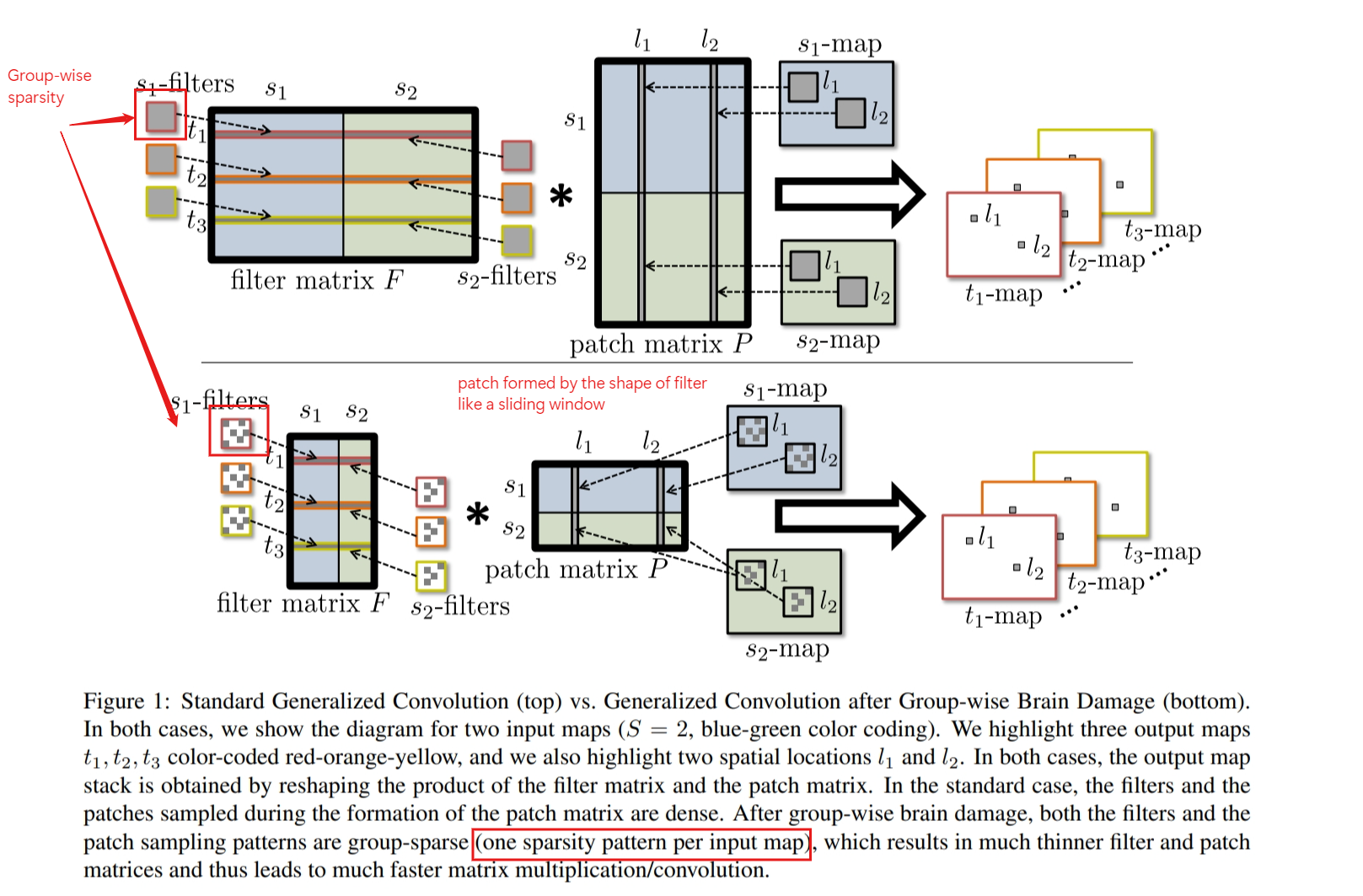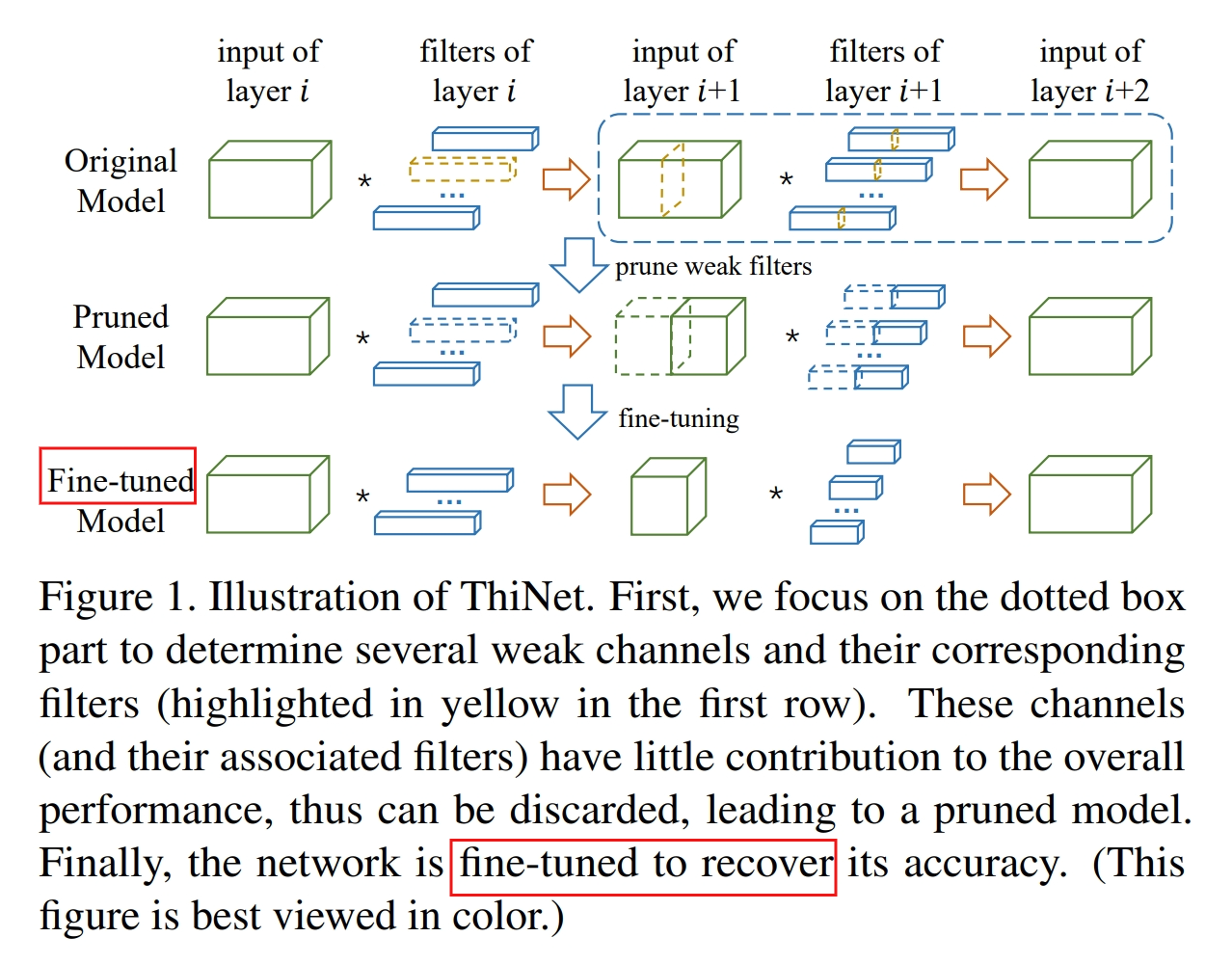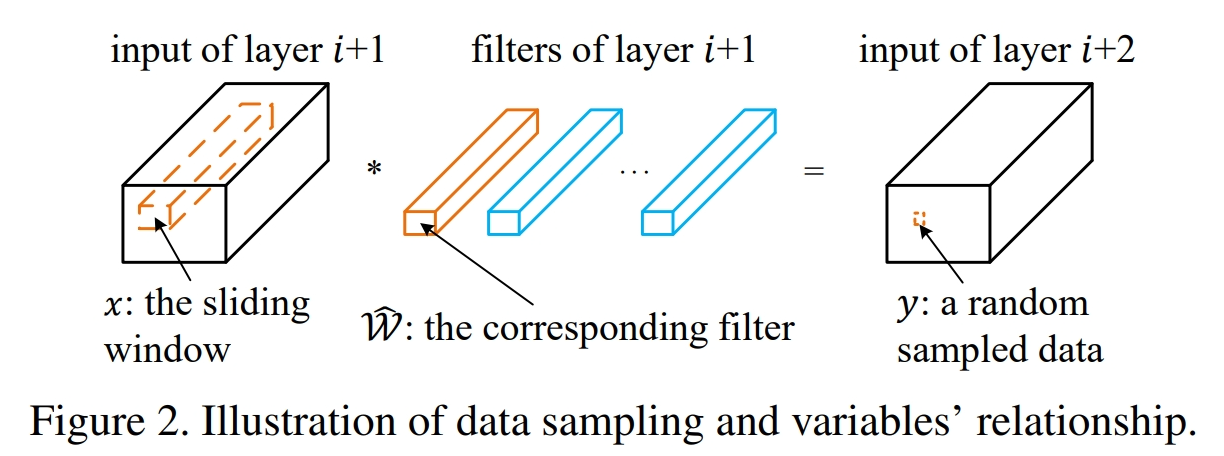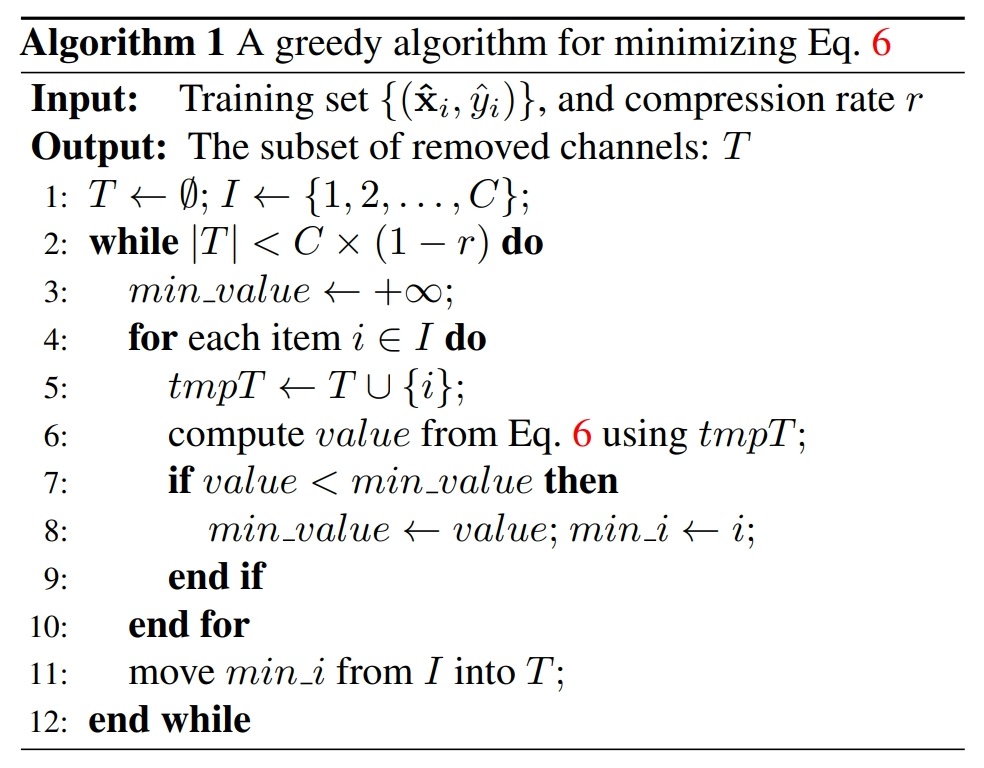ThiNet: A Filter Level Pruning Method for Deep Neural Network Compression
Abstract
we need to prune filters based on statistics information computed from its next layer, not the current layer, which differentiates ThiNet from existing methods
Introduction
Fast ConvNets Using Group-wise Brain Damage

some filter level pruning strategies
based on the magnitude of weights.
measure the importance of each filter by calculating its absolute weight sum.
if most outputs of some neurons are zero, these activations could be expected to be redundant. Compute the Average Percentage of Zeros (APoZ) of each filter as its importance score
adopt Taylor expansion to approximate the influence to loss function induced by removing each filter
Beyond pruning, there are other strategies to obtain small CNN models. One popular approach is parameter quantization. Low-rank approximation is also widely studied.
ThiNet

Framework of ThiNet
We summarize our framework as follows:
Filter selection
The key idea is: if we can use a subset of channels in layer (i + 1) ’s input to approximate the output in layer i + 1, the other channels can be safely removed from the input of layer i + 1.
Note that one channel in layer (i + 1) ’s input is produced by one filter in layer i, hence we can safely prune the corresponding filter in layer i.
Pruning
Fine-tuning
Iterate to step 1 to prune the next layer
Data-driven channel selection
Collecting training examples

Now, if we further define:
It is worthwhile to keep in mind that xˆ and yˆ are random variables whose instantiations require fixed spatial locations indexed by c, k1 and k2.
Given an input image, we first apply the CNN model in the forward run to find the input and output of layer i + 1. Then for any feasible (c, k1, k2) triplet, we can obtain a C-dimensional vector variable ˆx = {xˆ1, xˆ2, . . . , xˆC } and a scalar value yˆ using Equations mentioned above.
A greedy algorithm for channel selection
Objective Function:

Minimize the reconstruction error
Now we will further minimize the reconstruction error by weighing the channels, which can be defined as:
which is a classic linear regression problem
pruning strategies
Pruning for VGG-16:
Identify that more than 90% of FLOPs exist in the first 10 layers (conv1-1 to conv4-3).
Notice that FC layers contribute nearly 86.41% parameters.
Prune the first 10 layers for acceleration, but replace the FC layers with a global average pooling layer.
Belief that removing FC layers is simpler and more efficient.
Pruning for ResNet:
Face restrictions due to the special structure of ResNet.
Each block in the same group must have consistent channel numbers to finish the sum operation.
Pruning the last convolutional layer of each residual block directly is difficult.
Since most parameters are located in the first two layers, pruning the first two layers is a good choice.
Different Filter Selection Criteria:
Weight Sum:
Filters with smaller kernel weights tend to produce weaker activations.
Calculate the absolute sum of each filter as its importance score.
APoZ (Average Percentage of Zeros):
Calculate the sparsity of each channel in output activations as its importance score.
Measure the ratio of zeros to non-zero activations.
These strategies highlight different approaches to pruning convolutional neural networks, considering factors such as layer importance, parameter distribution, and activation characteristics.